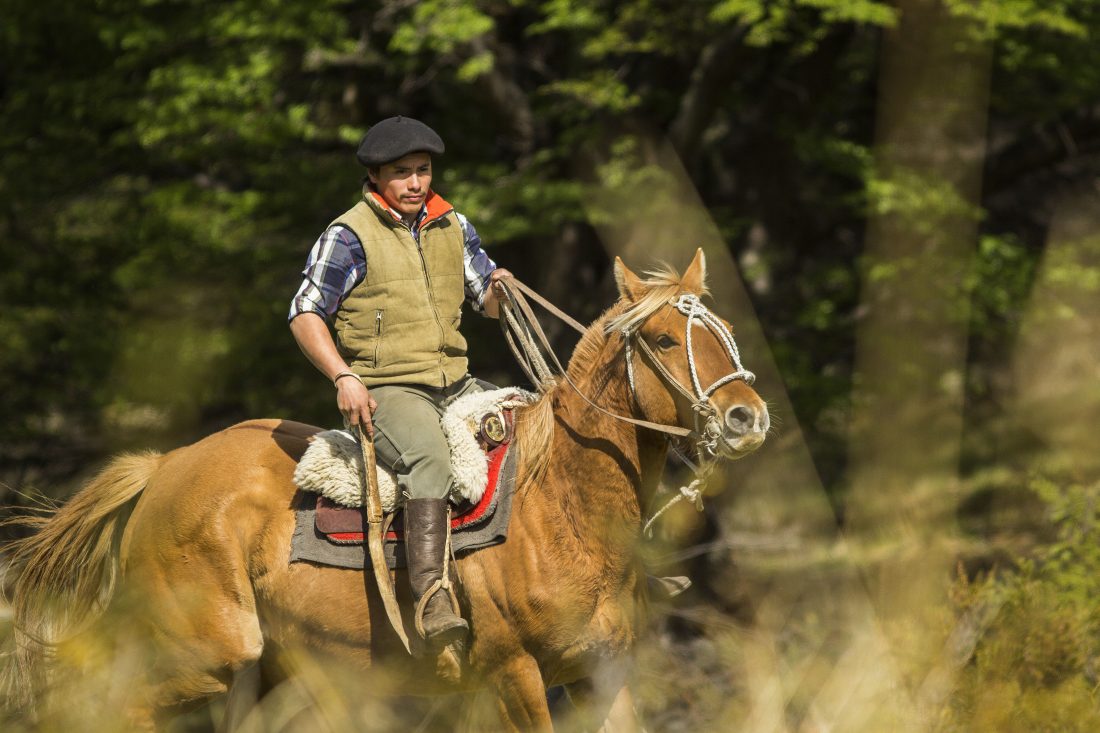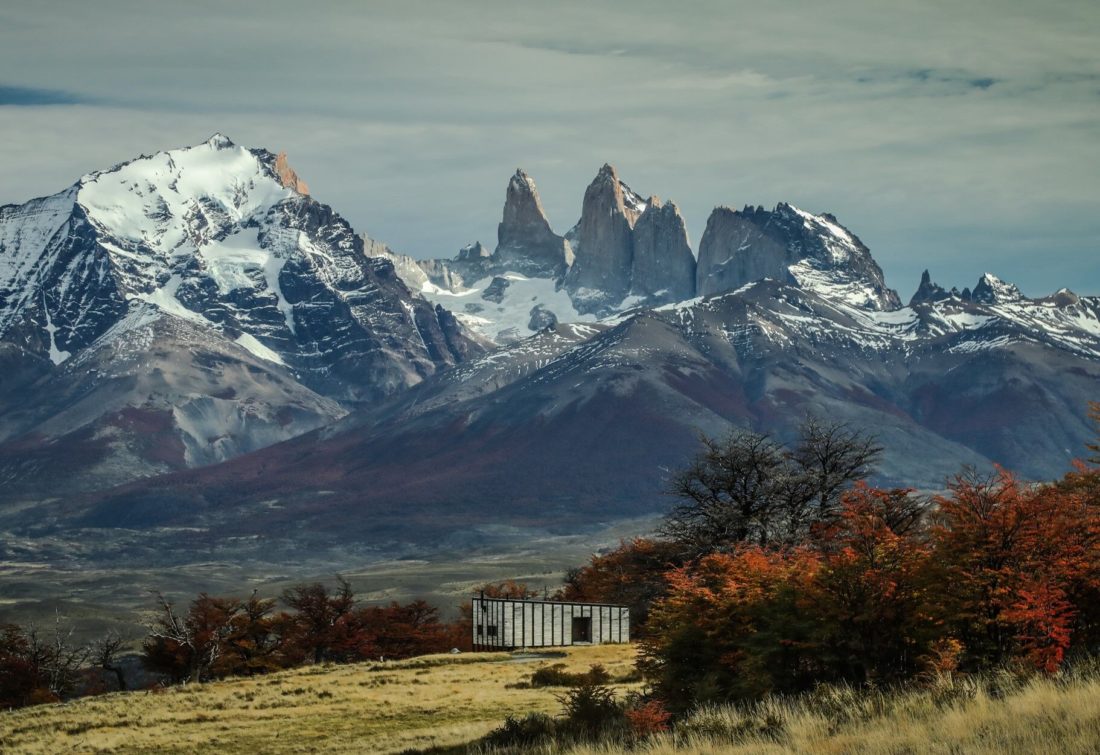Patagonia – a ruggedly beautiful, alluring region of snow-capped peaks, shimmering glaciers and untouched, windswept grasslands.
Renowned for its inhospitable climate, particularly in winter – fearsome, biting winds, heavy rain and formidable snow storms can sweep the landscape as temperatures plummet to lows of -20˚C – the plains of Patagonia have long captured the imagination of explorers and adventurers.

Image courtesy of BBC – Wilderness with Simon Reeve
In his latest series, Wilderness, traveller and television presenter Simon Reeve ventures to some of the wildest places on earth, including, of course, Patagonia. “A region so vast” he notes, “it covers the lower third of the continent of South America”.
Accompanied by experienced guides and climbers and a small camera crew, Simon experiences the enormity of Patagonia, a beguiling place encompassing Southern Argentina and Chile, where nature well and truly rules.
The team journeys to the colossal South Patagonian ice field, through the foothills of the Andes and the Patagonian Steppe towards Glacier Grey.
Trekking for several days, the team experiences the whole spectrum of Patagonian weather, from furious wind storms to still, electric blue skies. This is no place for casual tourists; their final cramp-on-assisted ascent to the isolated South Patagonian ice field includes a treacherous climb up a 40 degree slope of sheet ice.

Image courtesy of BBC – Wilderness with Simon Reeve
Upon reaching the desolate ice field (the largest expanse of ice in the Southern hemisphere outside of Antarctica) Simon declares: “On a very busy planet, this is a proper, wild wilderness part of the world”.
A repository for billions of tons of frozen water covering an area of over 500 square miles, the ice field is in parts over a mile deep.
“This is one of the least explored mountain areas of the world” Simon explains. “It’s one of the least known ice fields on the planet, but it is vast and the store of fresh water here is vital not just for Patagonia but for the whole of South America” he goes on, outlining how the huge store of ice helps to regulate the climate far across the continent.
Simon travels into the foothills of the Andes and spends a couple of days in the company of some gauchos, South America’s fabled cowboys who spend their days riding the endless grasslands tending to sheep and cattle, as their fathers and grandfathers have done for generations.

Hosted by the ageless Taibo, who exists much as his 19th century ancestors did, living alone in a ramshackle outpost many miles from civilisation, Simon spends some time learning the way of these unique men. Taibo shares his basic home with his dogs, spending most of his life on horseback, tending his herds and fuelled by a diet of red meat and mate.
Gaucho Taibo explains how the Patagonian weather patterns have radically changed in the last few decades. With glaciers retreating, rainfall decreasing, and drought and wildfires an ever-increasing threat, wildlife is suffering and the wilderness is undergoing dramatic change.
“Their way of life is still at the mercy of the environment and the landscape” explains Simon. “There is a risk that the gaucho way of life might wither and die out”.

Image courtesy of BBC – Wilderness with Simon Reeve
Simon treks onwards through the vast Patagonian steppe – a giant area of flat, unforested grassland, to a protected area of the Patagonian wilderness known as Torres del Paine.
It is here, within the beautifully raw, untouched landscape of Torres del Paine National Park, where luxury lodge Awasi Patagonia can be found.
14 private villas with sweeping views over the reserve have been designed to blend seamlessly into their natural surroundings with minimal footprint on the delicate ecosystem. The hotel has a strong commitment to sustainability; Awasi has been carbon neutral for several years.
A main lodge offers an expansive living space, an open bar and a Relais & Châteaux restaurant serving the finest, freshest, locally sourced – and influenced – food. Guests have their own private 4×4 vehicle and dedicated guide, with fully tailor-made excursions and itineraries.

Awasi Patagonia is situated on a private reserve overlooking the iconic Torres del Paine
Those in the market for wildlife spotting are well catered for.
Under the expert guidance of a team of private guides, Awasi guests have the opportunity to seek out flamingos, foxes and guanacos while condors soar overhead and pumas, whose numbers are increasing steadily in the region thanks to concerted conservation efforts, roam freely through the reserve.
While pumas are found along the entire length of the Americas, Patagonia now claims their greatest concentration.
As Simon himself notes: “Wild big cats roaming free. This surely is the absolute definition of a real wilderness”.
Simon Reeve and his team conclude their wild journey by crossing the border from Argentina into Chile to the great Glacier Grey.
“One of 53 glaciers that creep down from the great South Patagonian ice field, eventually turning into rivers that flow to the ocean, giving life to everything on their route across the south of the Americas”.

Photographs of pumas close to Awasi Patagonia taken by Matias de Cristobal
The bitter wind whips ice from the mountain peaks into swathes of eerie clouds. “Nature is raw and powerful and wonderful”, reflects Simon.
At four miles wide, Glacier Grey “is so brutishly huge, so epic that it can appear eternal, unchanging”, explains Simon.
The spectre of climate change is ever present, with glaciers in retreat and weather systems becoming more unpredictable, “a slow burn global disaster” as Simon puts it, caused by human activity far from this remote land.
“It’s not too late to preserve our last great wildernesses” implores Simon, as his trip to Patagonia comes to an end.
“These raw, wild areas need protecting. They’re worth fighting for. They’re vital for ensuring we have a healthy planet and they’re important for us as humans as well”.
“They feed our souls”.

